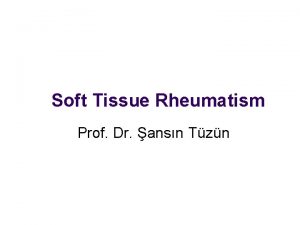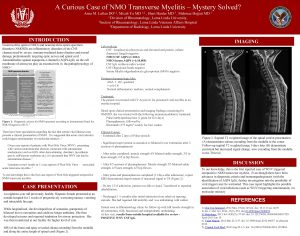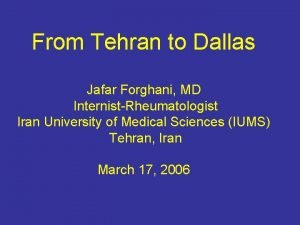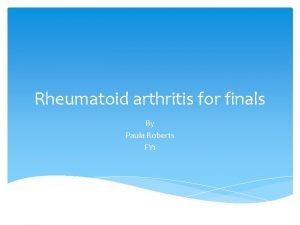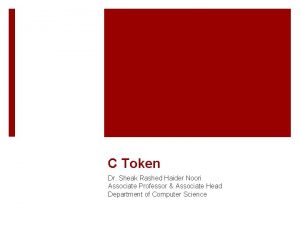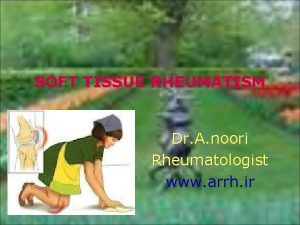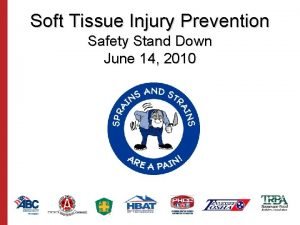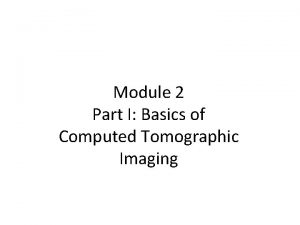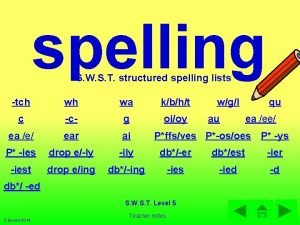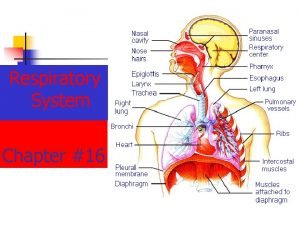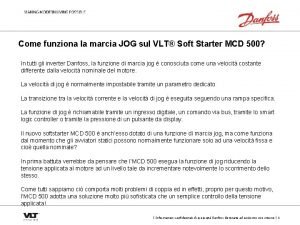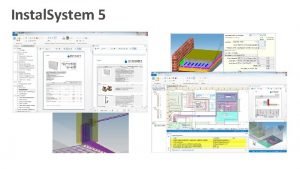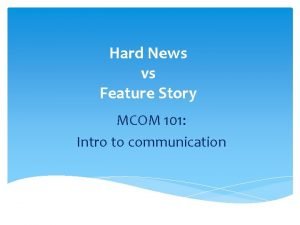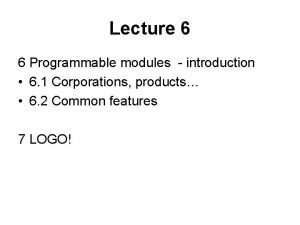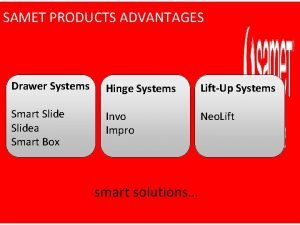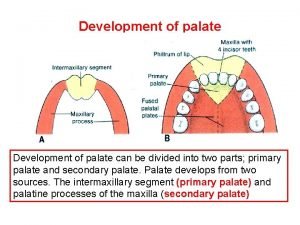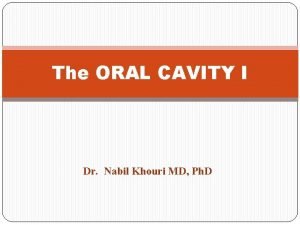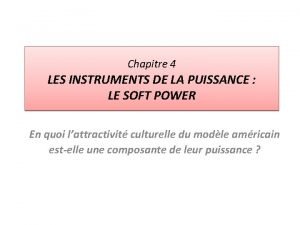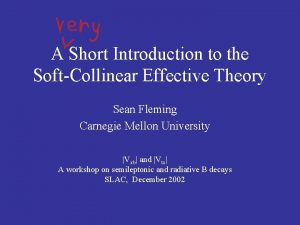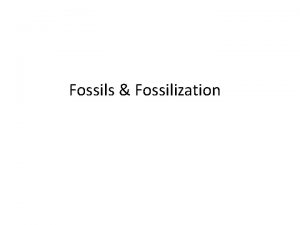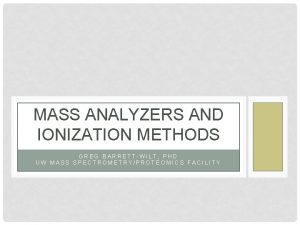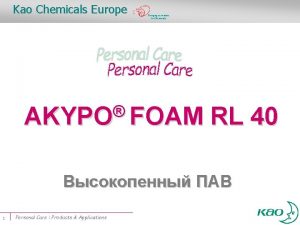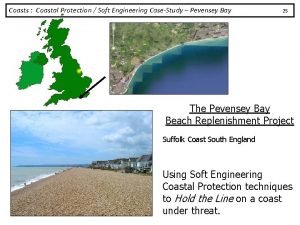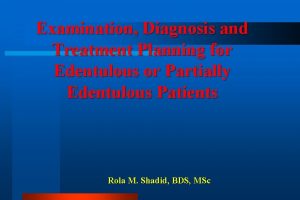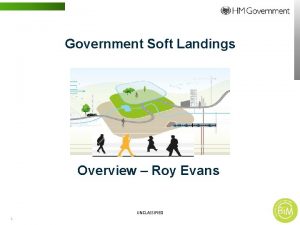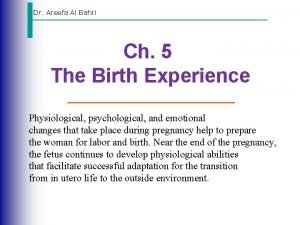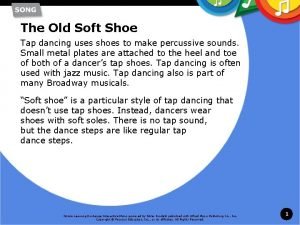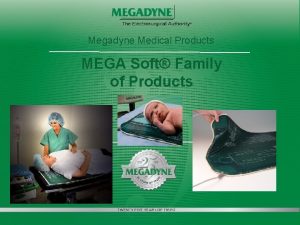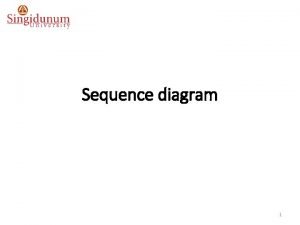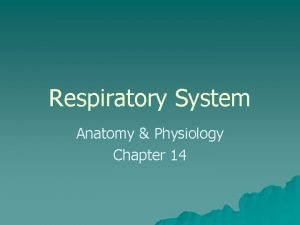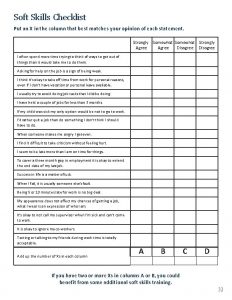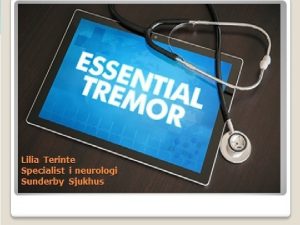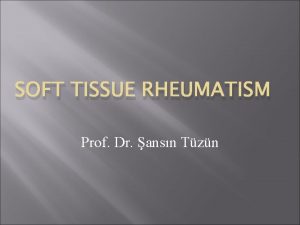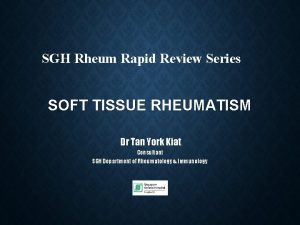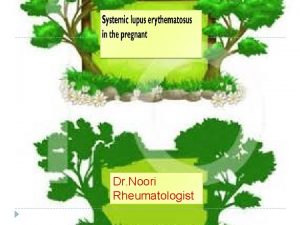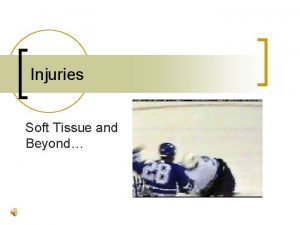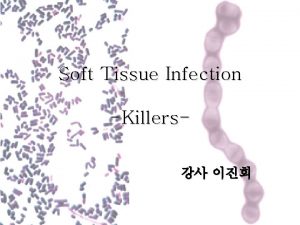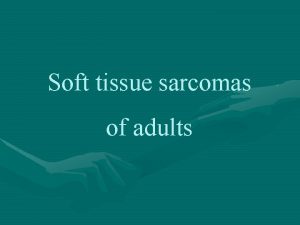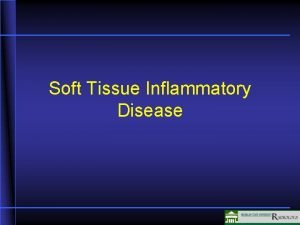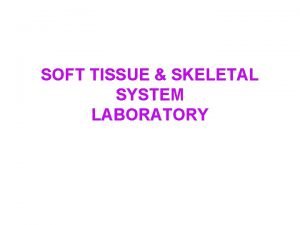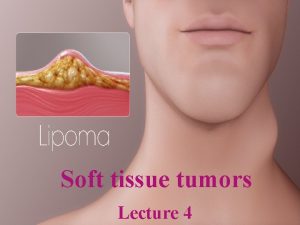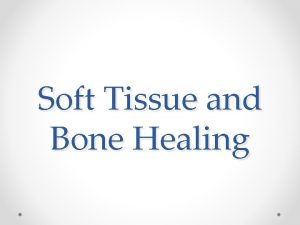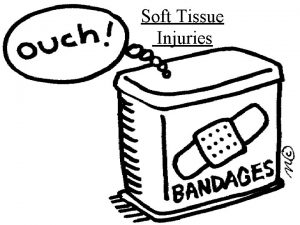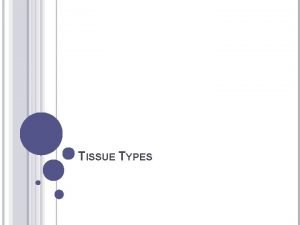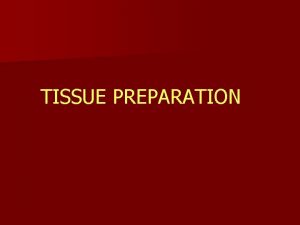SOFT TISSUE RHEUMATISM Dr A noori Rheumatologist www























































































































- Slides: 119

SOFT TISSUE RHEUMATISM Dr. A. noori Rheumatologist www. arrh. ir

A number of periarticular disorders have become increasingly common over the past two to three decades, . Periarticular disorders most commonly affect the knee or shoulder.

Excessive frictional forces from overuse, trauma, systemic disease (e. g. , rheumatoid arthritis, gout), infection may cause bursitis and tendinitis.

Soft Tissue Rheumatism Shoulder Ø Periarthritis (80%) Ø Glenohumeral joint (1%) Ø Refferal pain (15%)



Soft Tissue Rheumatism shoulder Region ØRotator Cuff Tear ØBicipital tendinitis ØRotator Cuff tendinitis ØAdhesive capsulitis ØCalcific tendinitis

ØRotator Cuff tendinitis


Tendinitis of the rotator cuff is the major cause of a painful shoulder and is currently thought to be caused by inflammation of the tendon(s). The rotator cuff consists of the tendons of the supraspinatus, infraspinatus, subscapularis, and teres minor muscles, and inserts on the humeral tuberosities.


Soft Tissue Rheumatism Rotator Cuff Tendinitis Ø Epidemiology: F>M, age>40 Ø Most common cause of shoulder pain Ø Etiology: overuse, especially with activities involving elevation of the arm with some degree of forward flexion. Impingement syndrome occurs in persons participating in baseball, tennis, swimming, or occupations that require repeated elevation of the arm

Soft Tissue rheumatism Impingement Of Rotator Cuff

Soft Tissue Rheumatism Rotator Cuff Tendinitis Ø Clinical manifestation: Patients complain of a dull aching in the shoulder, which may interfere with sleep. Severe pain is experienced when the arm is actively abducted into an overhead position. The arc between 60° and 120° is especially painful. Tenderness is present over the lateral aspect of the humeral head just below the acromion

Soft Tissue Rheumatism Painful Arc

ØTreatment NSAIDs, local glucocorticoid : injection, and physical therapy may relieve symptoms. Surgical decompression of the subacromial space may be necessary in patients refractory to conservative treatment.

Soft Tissue Rheumatism Injection of Subacromion Bursa

Soft Tissue Rheumatism Rotator Cuff Tear Ø Epidemiology: F>M, middle and old ages Ø Etiology: trauma, fracture or dislocation of shoulder joint, degeneration, rotator cuff tendinitis Ø Clinical manifestation: pain and weakness on abduction, drop arm sign Ø Diagnosis: X-Ray, ultrasound, arthrography; MRI Ø Treatment: acute tearing in young patients (surgery), steroid injection (after 6 weeks in acute form), physical therapy

Soft Tissue Rheumatism Rotator Cuff Tear Ø Epidemiology: F>M, middle and old ages Ø Etiology: trauma, fracture or dislocation of shoulder joint, degeneration, rotator cuff tendinitis Ø Clinical manifestation: pain and weakness on abduction, drop arm sign Ø Diagnosis: X-Ray, ultrasound, arthrography; MRI


Patients may tear the supraspinatus tendon acutely by falling on an outstretched arm or lifting a heavy object. Symptoms : pain along with weakness of abduction and external rotation of the shoulder. Atrophy of the supraspinatus muscles develops.

The diagnosis : arthrogram, ultrasound, or MRI. Surgical repair may be necessary in patients who fail to respond to conservative measures. In patients with moderate-to-severe tears and functional loss, surgery is indicated.

Soft Tissue Rheumatism Shoulder Arthrogram (Rotator Cuff)

Soft Tissue Rheumatism Bicipital Tendon



Bicipital Tendinitis and Rupture § Bicipital tendinitis, or tenosynovitis, is produced by friction on the tendon of the long head of the biceps as it passes through the bicipital groove. When the inflammation is acute, patients experience anterior shoulder pain that radiates down the biceps into the forearm

Soft Tissue Rheumatism Bicipital Tendinitis ØEtiology: sport injury, special activity ØClinical manifestation: acute or chronic pain on anterior of shoulder, tenderness on palpation of bicipital groove, associated with Rotator cuff tendinitis

Soft Tissue Rheumatism Bicipital Tendinitis ØDiagnosis: yergason’s sign, speed test, pope eye sign (tendon rupture) ØTreatment: rest, physical therapy, NSAIDs, steroid injection, surgery


. Abduction and external rotation of the arm are painful and limited. Pain may be elicited along the course of the tendon by resisting supination of the forearm with the elbow at 90° (Yergason's supination sign).

Soft Tissue Rheumatism Yergason’s Sign And Speed Test


Acute rupture of the tendon may occur with vigorous exercise of the arm and is often painful. In a young patient, it should be repaired surgically.

Rupture of the tendon in an older person : little or no pain and is recognized by the presence of persistent swelling of the biceps ("Popeye" muscle) produced by the retraction of the long head of the biceps. Surgery is usually not necessary in this setting

Calcific Tendinitis deposition of calcium salts, primarily hydroxyapatite, within a tendon. The exact mechanism of calcification is not known but may be initiated by ischemia or degeneration of the tendon. The supraspinatus tendon is most often affected because it is frequently impinged on and has a reduced blood supply when the arm is abducted.

Calcific Tendinitis The condition usually develops after age. 40. Calcification within the tendon may evoke acute inflammation, producing sudden and severe pain in the shoulder. However, it may be asymptomatic or not related to the patient's symptoms

Soft Tissue Rheumatism Calcific Tendinitis


Adhesive Capsulitis Often referred to as "frozen shoulder, " adhesive capsulitis : pain and restricted movement of the shoulder, usually in the absence of intrinsic shoulder disease. Adhesive capsulitis may follow bursitis or tendinitis of the shoulder.

Adhesive Capsulitis associated with systemic disorders such as chronic pulmonary disease, myocardial infarction, and diabetes mellitus. Prolonged immobility of the arm contributes to the development of adhesive capsulitis. Pathologically, the capsule of the

Adhesive capsulitis : commonly in women after age 50. Pain and stiffness usually develop gradually but progress rapidly in some patients. Night pain is often present in the affected shoulder and pain may interfere with sleep. The shoulder is tender to palpation, and both active and passive movement are restricted. Radiographs of the shoulder show osteopenia. .

The diagnosis is typically made by physical examination but can be confirmed if necessary by arthrography, in that only a limited amount of contrast material, usually <15 m. L, can be injected under pressure into the shoulder joint.

In most patients, the condition improves spontaneously 1– 3 years after onset. While pain usually improves, many patients are left with some limitation of shoulder motion. Early mobilization of the arm following an injury to the shoulder may prevent the development of this disease. Physical therapy: the foundation of treatment for adhesive capsulitis.

Local injections of glucocorticoids and NSAIDs may also provide relief of symptoms. Slow but forceful injection of contrast material into the joint may lyse adhesions and stretch the capsule, resulting in improvement of shoulder motion. Manipulation under anesthesia may be helpful in some patients. , . ; /

Soft Tissue Rheumatism Adhesive Capsulitis (2) Ø Diagnosis: underlying disease (FBS), X-Ray MRI, arthrography (loss of joint cavity space) Ø Treatment: NSAIDs, steroid (local injection or systemic), physical therapy (pendulum exercise, wall climbing), manipulation under anesthesia in refractory cases

Soft Tissue Rheumatism Elbow Region ØLateral epicondylitis ØMedial Epicondylitis ØOlecranon bursitis ØUlnar nerve entrapment



Soft Tissue Rheumatism Olecranon Bursitis Ø Etiology: low grade chronic trauma _inflammatory arthritis, septic Ø Clinical manifestation: pain and tenderness is minimal , clear or blood tinged fluid in aspiration Ø Treatment: avoid special habit, fluid aspiration and steroid injection, antibiotic in septic bursitis, surgery in refractory cases




Soft Tissue Rheumatism Muscle Insertions Around The Elbow Joint

Lateral Epicondylitis (Tennis Elbow) Lateral epicondylitis, or tennis elbow, : painful condition involving the soft tissue over the lateral aspect of the elbow. The pain originates at or near the site of attachment of the common extensors to the lateral epicondyle and may radiate into the forearm and dorsum of the wrist. The pain usually appears after work or recreational activities involving repeated motions of wrist extension and supination against resistance.




Soft Tissue Rheumatism Resisted Wrist Extension Test

Soft Tissue Rheumatism Muscle Insertions Around The Elbow Joint

Soft Tissue Rheumatism Lateral Epicondylitis ØEpidemiology: ages (35 -50), F=M ØEtiology: inflammation of common extensor tendon, tennis player, gardening, ØClinical manifestation: pain in lateral epicondyle, radiation to forearm, weakness on grasping, differentiation with radial nerve entrapment

Treatment usually rest along with administration of an NSAID. Ultrasound, icing, and friction massage may also help relieve pain. When pain is severe, the elbow is placed in a sling or splinted at 90° of flexion.

Soft Tissue Rheumatism Lateral Epicondylitis ØDiagnosis: pain on resisted wrist extension, X-Ray (calcification, exostosis) ØTreatment: NSAIDs, physical therapy, steroid injection, surgery (>6 months),

Medial Epicondylitis Medial epicondylitis is an overuse syndrome resulting in pain over the medial side of the elbow with radiation into the forearm. The cause of this syndrome is considered to be repetitive resisted motions of wrist flexion and pronation, .

. patients >35 years and is much less common than lateral epicondylitis. It occurs most often in work-related : : swinging a golf club (golfer's elbow) or throwing a baseball. On physical examination, there is tenderness just distal to the medial epicondyle over the origin of the forearm flexors. Pain can be reproduced by resisting wrist flexion and pronation with the elbow extended.

Soft Tissue Rheumatism Resisted Wrist Flexion Test

Treatment s conservative, involving rest, NSAIDs, friction massage, ultrasound, and icing splinting. Injections of glucocorticoids at the painful site may also be effective. Patients should be instructed to rest for at least one month. Also, patients should start physical therapy once the pain has subsided. In patients with chronic debilitating medial epicondylitis that remains unresponsive after at least a year of treatment, surgical release of the flexor muscle at its origin may be necessary and is often successful.

Soft Tissue Rheumatism wrist And Hand Region ØCarpal tunnel syndrome ØDe quervain’s tenosynovitis ØTrigger finger ØGanglion ØDupuytren’s contracture

Soft Tissue Rheumatism Anatomy Of Carpal Tunnel

Soft Tissue Rheumatism Carpal Tunnel Syndrome (1) Ø Epidemiology: F/M=5/1, symptomatic CTS (3% F, 2% M), peak age (30 -60) Ø Etiology: Inflammatory disease (RA, SLE, PSS), crystal arthropathy, job trauma, local (osteophyte, tumors), metabolic (DM 6%, myxedema, acromegaly), infection (tuberculosis, fungal, rubella), pregnancy, idiopathic Ø Clinical manifestation: nocturnal symptom (

Soft Tissue Rheumatism Sensory Supply To The Hand

Soft Tissue Rheumatism Carpal Tunnel Syndrome (2) Ø weakness and atrophy in chronic cases, Phalen’s maneuver (40 -80% sensitivity and specificity), Tinel’s sign (sensitivity 25 -60%, specificity 68 -87%), tourniquet test Ø Diagnosis: physical examination, EMG-NCV Treatment: treating : Ø splinting, NSAID’s, steroid (local injection or systemic), , surgery (sever symptom>1 year, atrophy

Soft Tissue Rheumatism Tinel’s Sign And Phalen’s Test


Soft Tissue Rheumatism Thenar Muscle Atrophy


Soft Tissue Rheumatism Carpal Tunnel Syndrome (Local Injection)

Soft Tissue Rheumatism De Quervain’s Tenosynovitis Ø Epidemiology: age>40, F>M Ø Etiology: repetitive activity with thumb pinching and moving wrist, inflammation of tendon sheath (abductor pollicis longus and extensor pollicis brevis) Ø Clinical manifestation: pain and tenderness, swelling over the radial styloid, Finkelstein test Ø Treatment: rest, NSAID’s, local steroid injection, surgery in refractory cases

Soft Tissue Rheumatism De Quervain’s Tenosynovitis


Soft Tissue Rheumatism Finkelstein Test

Soft Tissue Rheumatism Dupuytren’s Contracture

Soft Tissue Rheumatism Flexor Tendon Sheaths Of The Hand

Soft Tissue Rheumatism Dupuytren’s Contracture Ø Epidemiology: F/M 1/5, white man Ø Etiology: shortening and thickening of palmar fascia, hereditary, alcoholism, epilepsy, DM, any chronic disease Ø Clinical manifestation: 4 th, flexion contracture of one or more digits, in decreasing order (5 th 3 th, 2 th fingers) Ø Treatment: physical therapy, steroid injection, colchicin, vitamin E, surgery

Soft Tissue Rheumatism Volar Flexor Tenosynovitis (Trigger Fingers) Ø Etiology: inflammation of tendon sheaths of flexor digitorum, trauma, inflammatory disease (RA, psoriatic arthritis, crystal arthropathy, overused, osteoarthritis Ø Clinical manifestation: painful finger flexion (middle and index fingers), swelling, tenderness and nodule proximal to MCP joint in the volar side, Ø treatment: rest, physical therapy, NSAID’s, steroid injection, surgery

Soft Tissue Rheumatism Ganglion Ø Epidemiology: ages 20 -40, F=M Ø Etiology: cystic swelling arising from a joint or tendon sheath, trauma, prolonged wrist extension Ø Clinical manifestation: swelling and discomfort on wrist extension Ø Treatment: splint, rest, physical therapy, NSAID’s, steroid injection, surgery

Soft Tissue Rheumatism Ganglion Ø Epidemiology: ages 20 -40, F=M Ø Etiology: cystic swelling arising from a joint or tendon sheath, trauma, prolonged wrist extension Ø Clinical manifestation: swelling and discomfort on wrist extension Ø Treatment: splint, rest, physical therapy, NSAID’s, steroid injection, surgery

SOFT TISSUE RHEUMATISM LOWER EXTREMITY

Soft Tissue Rheumatism Hip Region ØTrochantric bursitis ØIliopsoas bursitis ØIschial bursitis

Soft Tissue Rheumatism The Bursa Of The Hip Joint


Soft Tissue Rheumatism Trochantric Bursitis Ø Epidemiology: age 30 -70, F>M Ø Etiology: local trauma, osteoarthritis of hip and lumbar spine, scoliosis, leg-length discrepancy, inflammatory conditions Ø Clinical manifestation: pain on moving and lying on the involved side, pain in external rotation and abduction against resistance, calcification in X-Ray Ø Treatment: NSAID’s, steroid injection

Soft Tissue Rheumatism Iliopsoas Bursitis Ø Etiology: trauma, inflammatory conditions, septic, communication with hip joint (15%) Ø Clinical manifestation: groin and anterior thigh pain, exacerbation of pain with hyperextension of hip, cystic mass (30%), femoral venous obstruction Ø Diagnosis: X-Ray with contrast media, MRI Ø Treatment: NSAID’s, steroid injection, surgery

Soft Tissue Rheumatism CT Scan Of Iliopsoas Bursitis

Soft Tissue Rheumatism Ischial Bursitis Ø Etiology: trauma, prolonged sitting on hard surface, weaver’s bottom Ø Clinical Manifestation: radiation of pain to back of the thigh, local tenderness Ø Treatment: modified activity, cushion’s, NSAID’s, steroid injection with caution

Soft Tissue Rheumatism Meralgia Paresthetica Ø Etiology: obesity, pregnancy, diabetes, direct trauma, compression from corset, leg-length discrepancy Ø Clinical manifestation: hyperesthesia and numbness of anterolateral thigh, exacerbation of pain with , extension and abduction of thigh, prolonged standing and walking, Decreased touch and pinprik sensation Ø Diagnosis: NCV Ø Treatment: weight loss, steroid injection (medial to anterior superior iliac spine

Soft Tissue Rheumatism Meralgia Paresthetica

Soft Tissue Rheumatism knee Region ØPopliteal cyst ØPrepatellar and infrapatellar bursitis ØAnserine bursitis ØPatellar tendinitis

Soft Tissue Rheumatism Popliteal Cyst (Baker’s Cyst) Ø Etiology: any knee disease with synovial effusion (mechanical and inflammatory), naturally occurring communication between knee joint and semimembranosusgastrocnemius bursa (40%) Ø Clinical manifestation: diffuse swelling and pain of calf, erythema and edema of ankle (ceresent sign), mimiking thrombophlebitis Ø Diagnosis: ultrasound, arthrography, MRI Ø Treatment: rest, aspiration and steroid injection, surgery

Soft Tissue Syndrome Prepatellar and Infrapatellar Bursitis Ø Etiology: trauma, frequent kneeling (housemaid’s knee), inflammatory (gout, septic) Ø Clinical manifestation: pain, tenderness, swelling, hotness and redness (septic) Ø Treatment: aspiration and culture, steroid injection, modified activity






Soft Tissue Rheumatism Anserine Bursitis Ø Epidemiology: age 30 -50, F>M Ø Etiology: inflammation ) include, tendons of gracilis, sartorius, semitendinosus, osteoarthritis of knee, obese Ø Clinical manifestation: pain and tenderness over the medial aspect of the knee (2 inch below the joint margin Ø Treatment: rest, stretching of adductor and quadriceps muscles, NSAID’s, steroid injection

The diagnosis of plantar fasciitis can usually be made on the basis of history and physical examination alone. Patients experience severe pain with the first steps on arising in the morning or following inactivity during the day. The pain usually lessens with weight-bearing activity during the day, only to worsen with continued activity. Pain is made worse on walking barefoot or up stairs. On examination, maximal tenderness is elicited on palpation over the inferior heel corresponding to the site of attachment of the plantar fascia

Soft Tissue Rheumatism Retrocalcaneal Bursitis Ø Etiology: inflammation of the bursa between the posterior surface of the achille tendon and the calcaneous, trauma, inflammatory arthritis (especially spondyloarthropathy) Ø Clinical manifestation: pain on dorsiflexion, tenderness, local swelling and bulging Ø Diagnosis: physical diagnosis, MRI, ultrasound Ø Treatment: rest, splint, NSAID’s,

Soft Tissue Rheumatism Subcutaneous Achilles Bursitis Ø Etiology: pressure of shoes, bony exostoses; sondyloarthropathy Ø Clinical manifestation: pain, swelling and redness Ø Treatment: relief from shoe pressure, treatment of underlying disease


Soft Tissue Rheumatism Achilles tendinitis Ø Etiology: trauma, athletic injury, fitting shoes, inflammatory conditions (especially spondyloarthropathy) Ø Clinical manifestation: pain on dorsiflexion, swelling, crepitus on motion Ø Diagnosis: MRI, ultrasound Ø Treatment: rest, splint (slight plantar flexion), NSAID’s






Soft Tissue Rheumatism Plantar Fascia

Soft Tissue Rheumatism Plantar Fasciitis Ø Etiology: athletic over activity, prolonged walking, improper shoes, spondyloarthropathy Ø Clinical manifestation: pain (morning upon arising, initial improvement, worsen later in the day), burning, aching, tenderness on palpation of medial calcaneal tubercle Ø Diagnosis: rest, heel pad, NSAID’s, orthoses, steroid injection

Soft Tissue Rheumatism Hallux Valgus-Bunion Ø Etiology: deviation of the large toe, genetic tendency, improper shoes, inflammatory arthritis, osteoarthritis Ø Clinical manifestation: deformity, local tenderness and redness (bunion), X-Ray (osteoarthritis of first MTP) Ø Treatment: orthoses and bunion pads, NSAID’s, surgery
 Soft tissue rheumatism
Soft tissue rheumatism Rheumatologist carefirst bcbs
Rheumatologist carefirst bcbs Rheumatologist vsp
Rheumatologist vsp Dr forghani rheumatologist
Dr forghani rheumatologist Dr susan wallis rheumatologist
Dr susan wallis rheumatologist Dr eugene lim rheumatologist
Dr eugene lim rheumatologist Dr. sheak rashed haider noori
Dr. sheak rashed haider noori Meerangdo leirangdo part 70
Meerangdo leirangdo part 70 Dr muna noori
Dr muna noori Muna noori
Muna noori Open fracture grading
Open fracture grading Safety stand down examples
Safety stand down examples Abatacept
Abatacept Periarticular soft tissue swelling
Periarticular soft tissue swelling Chapter 14 bleeding shock and soft tissue injuries
Chapter 14 bleeding shock and soft tissue injuries X ray machine
X ray machine Perforation plates
Perforation plates Winmentor service
Winmentor service Soft and hard skills
Soft and hard skills People soft
People soft Emerging trends in software engineering ppt
Emerging trends in software engineering ppt Soft copy output devices
Soft copy output devices Double words
Double words Soft spongy cone shaped organs in the thoracic cavity
Soft spongy cone shaped organs in the thoracic cavity Soft starter funzionamento
Soft starter funzionamento Customer service standards table
Customer service standards table Hard science and soft science
Hard science and soft science Instalsystem 5
Instalsystem 5 Hard news story
Hard news story Mule soft api
Mule soft api Logo soft
Logo soft Characters in there will come soft rains
Characters in there will come soft rains Soft liner composition
Soft liner composition Peoplesoft utep
Peoplesoft utep Eesy soft
Eesy soft Slsme
Slsme Example of prose in romeo and juliet
Example of prose in romeo and juliet Gerard polla
Gerard polla Disadvantages of soft close hinges
Disadvantages of soft close hinges Budaya korporat kkm 2020
Budaya korporat kkm 2020 Soft web plus
Soft web plus Myfloridareadytowork
Myfloridareadytowork Afpub
Afpub Soliloquy romeo and juliet
Soliloquy romeo and juliet Soft palate development
Soft palate development Soft power
Soft power Tooth blood supply
Tooth blood supply Priasoft work wise report
Priasoft work wise report Slidetodoc.com
Slidetodoc.com Adverbs of manner soft
Adverbs of manner soft Guarsafe soft 6
Guarsafe soft 6 Introduction to soft-collinear effective theory:
Introduction to soft-collinear effective theory: Soft skills entrepreneurship
Soft skills entrepreneurship Soft market testing
Soft market testing Chapter 20 milady chemical texture services
Chapter 20 milady chemical texture services Soft landing
Soft landing Wholesale sbr bioreactor
Wholesale sbr bioreactor Quest soft
Quest soft Unaltered soft parts
Unaltered soft parts Slogan buy it sell it love it
Slogan buy it sell it love it Cone-shaped projection hanging down from soft palate
Cone-shaped projection hanging down from soft palate Clam
Clam Soft ionization
Soft ionization Indu soft
Indu soft People soft 8
People soft 8 Hard tooling vs soft tooling
Hard tooling vs soft tooling Soft margin svm sklearn
Soft margin svm sklearn Akypo foam rl 40
Akypo foam rl 40 Utep direct deposit
Utep direct deposit Lining epithelium of soft palate
Lining epithelium of soft palate Market form of chicken
Market form of chicken Soft handicap
Soft handicap Starter of the day activity soda morning soft start
Starter of the day activity soda morning soft start Soft computing techniques
Soft computing techniques Soft school emploi du temps
Soft school emploi du temps Nishchay soft
Nishchay soft Safewards talk down
Safewards talk down Eckels travels with time safari because he wants to
Eckels travels with time safari because he wants to Soft capping
Soft capping Smart soft grid
Smart soft grid Gosco valves
Gosco valves Walter cunningham personality
Walter cunningham personality Soft enterprise
Soft enterprise Soft-reconfiguration inbound
Soft-reconfiguration inbound Hard and soft system model of change
Hard and soft system model of change Sucrose chelation theory
Sucrose chelation theory 60 soft skills
60 soft skills Mipsfpga
Mipsfpga Skin soft
Skin soft Beach recycling soft engineering
Beach recycling soft engineering Sublingual crescent area
Sublingual crescent area Wifisoft
Wifisoft Soft words safewards
Soft words safewards Government soft landings
Government soft landings Fetal station chart
Fetal station chart Humid seal of soft affections
Humid seal of soft affections Soft shoe meaning
Soft shoe meaning Sistema premium soft
Sistema premium soft S611 soft starter
S611 soft starter Megadyne grounding pad
Megadyne grounding pad Soft ledger
Soft ledger Logobid
Logobid Disadvantages of soft engineering
Disadvantages of soft engineering Soft model
Soft model Ray bradbury the veldt
Ray bradbury the veldt Soft
Soft Mizzisoft easy roster
Mizzisoft easy roster The seven last plagues
The seven last plagues Interpretasi baum
Interpretasi baum Gentle answer turns away wrath
Gentle answer turns away wrath Description of the larynx
Description of the larynx Soft skills seminar
Soft skills seminar Climax of an occurrence at owl creek bridge
Climax of an occurrence at owl creek bridge Hilly bourn
Hilly bourn Hard and soft system model of change
Hard and soft system model of change Soft serve ukraine
Soft serve ukraine Soft skills checklist
Soft skills checklist Soft balancing
Soft balancing Liskantin biverkningar
Liskantin biverkningar Soft standards examples
Soft standards examples
